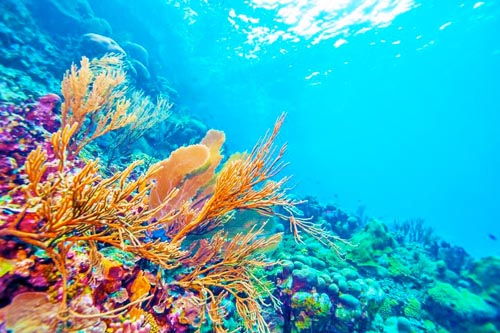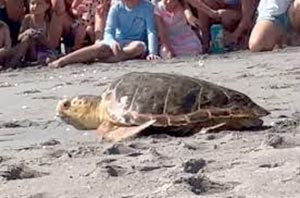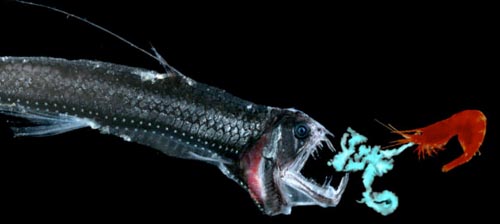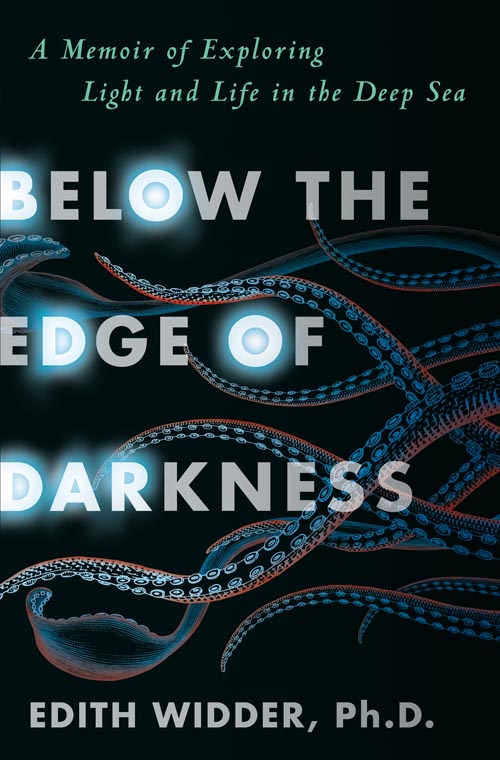 | | |  This issue of the RCC Coasts and Oceans Observer comes during one of the hottest months ever. June 2023 was the hottest month in recorded history based on global temperature, while July is on track to become the hottest month in about 120,000 years. This extreme warming is also felt in the ocean, which has absorbed 90% of the heat from human-driven climate change. Surface waters off the Gulf coast of Florida are over 90˚F, hot enough to severely threaten the region’s coral reefs and fish populations. This issue of the RCC Coasts and Oceans Observer comes during one of the hottest months ever. June 2023 was the hottest month in recorded history based on global temperature, while July is on track to become the hottest month in about 120,000 years. This extreme warming is also felt in the ocean, which has absorbed 90% of the heat from human-driven climate change. Surface waters off the Gulf coast of Florida are over 90˚F, hot enough to severely threaten the region’s coral reefs and fish populations.
High ocean temperatures are also affecting livelihoods and food security in Alaska. Snow crabs are of great cultural significance to Indigenous people, but are dwindling through displacement by other species and decreasing food supply. Marine animals also face threats from the fishing industry, particularly seabirds, as RCC Special Correspondent Lisa Mills reveals in her blog, The Weekly Warbler. Seabirds have a keen sense of smell that attracts them to fishing boats, where they become tangled in nets or otherwise injured. The World Wildlife Fund estimates that these incidents kill 300,000 seabirds each year. While this statistic is overwhelming, studies show that improved fishing practices, marine conservation, and consuming locally caught seafood can help protect seabirds. Consumer demand for fish not only drives commercial fishing, but also the aquaculture industry. Aquaculture, or raising aquatic animals for food, has had negative impacts on water quality and disrupted ocean food webs, and corporations are looking to expand the practice to the open sea. Nonprofit environmental advocacy groups are fighting back, urging the Biden administration to restrict aquaculture in open waters. Fishing and aquaculture aren’t the only intensive industries threatening ocean life. The International Seabed Authority (ISA), an international organization that supervises mining in international waters, has failed to finalize industry regulations for deep-sea mining, and now must accept applications without setting forth any rules to limit environmental damage. A study of the impacts of deep-sea mining on marine life found that a two-hour cobalt mining operation off the coast of Japan resulted in considerable declines in swimming animals in the surrounding area still lasting a year later.  While the threats to ocean life are varied and numerous, it isn’t all bad news for marine animals. Exciting developments in wildlife research and conservation provide hope for ocean ecosystems. Technology developed by the Woods Hole Oceanographic Institute allows buoys to detect whale songs in the New York Bight and collect real-time data to notify ships if there are whales in the area so they can slow their speed and proceed cautiously to prevent harming them. These data are especially important to protecting North Atlantic right whales, a near-extinct species that is vulnerable to shipping activity. In Florida, the Loggerhead Marine Life Center, an ocean and sea turtle conservation nonprofit organization, released a rehabilitated turtle named Sweet Potato back to the ocean after two months of treatment. While the threats to ocean life are varied and numerous, it isn’t all bad news for marine animals. Exciting developments in wildlife research and conservation provide hope for ocean ecosystems. Technology developed by the Woods Hole Oceanographic Institute allows buoys to detect whale songs in the New York Bight and collect real-time data to notify ships if there are whales in the area so they can slow their speed and proceed cautiously to prevent harming them. These data are especially important to protecting North Atlantic right whales, a near-extinct species that is vulnerable to shipping activity. In Florida, the Loggerhead Marine Life Center, an ocean and sea turtle conservation nonprofit organization, released a rehabilitated turtle named Sweet Potato back to the ocean after two months of treatment. Apart from ocean conservation, the United States took a major step toward a cleaner future earlier this month. The Biden Administration has approved the country’s largest offshore wind farm yet in New Jersey. The project, Ocean Wind 1, will have the capacity to power hundreds of thousands of houses in the state. As plans for offshore wind move forward in New Jersey, adversaries to clean energy have fought development by spreading misinformation. Their claims that offshore wind poses a danger to whales is not supported by scientific evidence, as RCC Stanback Presidential Fellow Sasha Provost explains in her compelling essay. This month, Provost also gives her take on Edith Widder’s Below the Edge of Darkness, a groundbreaking memoir detailing the marine biologist’s professional journey and fascination with deep-sea creatures. Also featured under “Book Reviews” is Life Between the Tides by Adam Nicolson, an exploration of the creatures living where the land meets the water on the coast of Scotland. The book comes 67 years after Rachel Carson published her own homage to the organisms inhabiting intertidal zones, The Edge of the Sea. This sweltering summer is a stark reminder of the urgent need to protect our oceans, which while severely threatened by climate change, also hold many solutions. | | | | | | | |  Emma Brentjens is the co-lead of the RCC Coasts and Oceans program. She is a Master of Environmental Management student at Duke University studying Ecosystem Science and Conservation and Community-based Environmental Management. Emma Brentjens is the co-lead of the RCC Coasts and Oceans program. She is a Master of Environmental Management student at Duke University studying Ecosystem Science and Conservation and Community-based Environmental Management. | | | | | | Biden Approves Largest Wind Project Yet Off U.S. Shores Ocean Wind 1, which could power hundreds of thousands of New Jersey homes, is the Biden administration’s third approval of a large offshore wind energy project The Biden administration gave a green light Wednesday to the largest-ever offshore wind project the U.S. has yet approved, paving the way for dozens of turbines that could eventually power hundreds of thousands of New Jersey homes. | | | | | | | | Keeping An Ear Out For Whales It’s easy to forget, standing in the concrete expanse of New York, that the city is a collection of islands. Out on the water, it all makes a lot more sense: a perfect harbor, where river meets sea, tides swirl and eddy, wetlands greet waves from across the ocean. Long before it was the chosen spot for one of the biggest cities in the world, it was also a great place for whales–before the era of commercial whaling, it’s estimated that there were as many as 21,000 North Atlantic right whales, 20,000 humpback whales, and about 50,000 each of fin and Sei whales in the North Atlantic. | | | | | | | | Dolphin Moms Use Baby Talk to Call to Their Young, Recordings Show You know instantly when someone is speaking to an infant or small child. It turns out that dolphin mothers also use a kind of high-pitched baby talk. A study published Monday found that female bottlenose dolphins change their tone when addressing their calves. Researchers recorded the signature whistles of 19 mother dolphins in Florida, when accompanied by their young offspring and when swimming alone or with other adults. | | | | | | | | Rehabilitated Turtle Returning to the Ocean Gets Standing Ovation The turtle, nicknamed Sweet Potato spent two months being treated for an injured flipper by the Loggerhead Marine Life Center in Florida. His right rear flipper had to be amputated, but veterinarians say he has made a full recovery. Amid cheers, Sweet Potato was carried onto Juno Beach. He lifted his head to pose for photos and say farewell to his well-wishers. Then Sweet Potato rode the tide back to his ocean home. | | | | | | | | Endangered Whale Species Closer to Extinction Than Previously Thought The world's most endangered large whale species is even closer to extinction than researchers previously thought. The North Atlantic Right Whale species is in a "crisis," NOAA says, with only a few hundred estimated individuals left in the world's oceans. "The species is approaching extinction with fewer than 350 individuals and fewer than 70 reproductively active females remaining," NOAA said in an updated fact sheet on the animals. | | | | | | | | Offshore Wind and Whales: The Next Nationwide Misinformation Battle In New Jersey, Republicans have found an unlikely cause to champion — whale conservation. Amidst recent reports of whale deaths along NJ’s coast, Republican legislators have pushed a narrative that places the blame on offshore wind development, calling for a moratorium on construction to protect vulnerable whale populations. In their justifications, they allege that Gov. Phil Murphy’s administration is pushing the projects forward without the proper environmental impact studies and claim that no investigations into whale deaths are being done. | | | | | | | | Billions of Snow Crabs Are Missing. A Remote Alaskan Village Depends on the Harvest to Survive. The Indigenous people of St. Paul Island need to decide their future — stay or go? Some 330 people, most of them Indigenous, live in the village of St. Paul, about 800 miles west of Anchorage, where the local economy depends almost entirely on the commercial snow crab business. | | | | | | | | Ode to the Salt Marsh: Paddling the Waters Less Traveled The tides come and go. Marsh grass is sometimes fluorescent green, other times it’s devoid of color. At times the water appears crystal clear and at others it’s murky. The marsh, or tidal creek appears different as the light changes, fog rolls in or out. Sunrises or sunsets, moonrises or sets, I find solitude in the salt marsh. There are hundreds of acres of marsh that I paddle on a stand-up paddleboard. There is little to no sound from my craft that tops out at around 3 mph and is propelled by my single-blade paddle. | | | | | | | | How Hot Is the Sea Off Florida Right Now? Think 90s Fahrenheit. Florida’s coral reefs are facing what could be an unprecedented threat from a marine heat wave that is warming the Gulf of Mexico, pushing water temperatures into the 90s. The biggest concern for coral isn’t just the current sea surface temperatures in the Florida Keys, even though they are the hottest on record. The daily average surface temperature off the Keys on Monday was just over 90 degrees Fahrenheit (32.4 Celsius), according to the National Oceanic and Atmospheric Administration. | | | | | | | | Dancing with Data Diving into the ocean-themed movements of the Boston Ballet’s “La Mer” The first-ever collaboration between the Woods Hole Oceanographic Institution (WHOI) and the Boston Ballet premiered in Boston’s historic Opera House from April 6-16, 2023. The show, entitled “La Mer,” paid homage to the ocean and its role in regulating Earth’s climate, elevating awareness to 15,000 attendees—a new audience for WHOI and an even newer way of communicating important ocean science. | | | | | | | | From Sea to Sky: How Seafood Harvesting is Affecting Seabirds Don’t get me wrong, I love seafood as much as the next person. I can inhale sushi at an alarming rate, can never pass up a fresh tuna steak, and basically anything with shrimp in it is practically calling my name. Fresh seafood is a great source of lean protein, and is absolutely delicious. Humans have always existed alongside the ocean’s bounty, and it is such an important part of our diet and identity. But there is a dark side to seafood that not many people know about. | | | | | | | | Deep-Sea Mining Can Chase off Marine Life for Months A new study finds that ocean animals decline in mining zones — and they stay gone even up to a year after operations cease. Published Friday in the scientific journal Current Biology, the research presents a case study on a 2020 Japanese mining test on the Takuyo-Daigo Seamount off the coast of Honshu, Japan’s largest island. The first of its kind, the test was aimed at extracting cobalt-rich crusts from the ocean floor, a key mineral used in battery manufacturing. | | | | | | | | At Sea as on Land? Activists Oppose Industrial Farming in U.S. Waters Perhaps the most notorious industrial farming institution is the concentrated animal feeding operation, or CAFO, in which livestock are raised in crowded conditions that require the heavy use of antibiotics to treat the infections that inevitably arise from such packed and stressful living. In recent decades, as a growing proportion of the world’s seafood has come from aquaculture, corporate actors have begun to take the same industrial food production tactics to the world’s waters, according to environmental and Indigenous rights activists. | | | | | | | | | | Life in the Eerie Regions Below the Edge of Darkness: A Memoir of Exploring Light and Life in the Deep Sea (Penguin Random House, 2021)   Though they lie far beyond the reach of sunlight, the depths of the ocean are anything but invariably dark. Instead, bioluminescent animals provide where nature cannot, creating a distinctive world of underwater light amidst the abysses and trenches that characterize the deep sea. This is the setting for Dr. Edith Widder's Below the Edge of Darkness, a memoir chronicling a lifetime spent in these eerie regions. Inspired by a brief period of childhood blindness, Widder grew to become obsessed with the role that bioluminescence plays in the communication and operation of deep sea marine organisms. This reverence for the underwater world is palpable in Below the Edge of Darkness, with vivid descriptions that drag readers down to the depths alongside Widder, immersing them in an environment like no other. Though they lie far beyond the reach of sunlight, the depths of the ocean are anything but invariably dark. Instead, bioluminescent animals provide where nature cannot, creating a distinctive world of underwater light amidst the abysses and trenches that characterize the deep sea. This is the setting for Dr. Edith Widder's Below the Edge of Darkness, a memoir chronicling a lifetime spent in these eerie regions. Inspired by a brief period of childhood blindness, Widder grew to become obsessed with the role that bioluminescence plays in the communication and operation of deep sea marine organisms. This reverence for the underwater world is palpable in Below the Edge of Darkness, with vivid descriptions that drag readers down to the depths alongside Widder, immersing them in an environment like no other. The narrative follows the highs and lows of Widder's career, from the triumph of being the first to capture footage of the elusive giant squid to the harrowing experience of being trapped within a sinking submersible as it filled with water. Below the Edge of Darkness synthesizes these anecdotes with a wealth of information about bioluminescent life in the deep sea, making the memoir as educational as it is enthralling. There is perhaps no one better to discuss these topics than Widder, a woman with decades of groundbreaking research under her belt. Through her hundreds of dives, massive contributions to the development of modern submersibles, and dedication to developing unobtrusive observation equipment, Widder’s work has transformed our understanding of the deep ocean and the organisms that call it home. Read more | | | | | |  The Rachel Carson Council Depends on Tax-deductible Gifts From Concerned Individuals Like You. Please Help If You Can. The Rachel Carson Council Depends on Tax-deductible Gifts From Concerned Individuals Like You. Please Help If You Can. | | | | | | | |  Sign Up Here to Receive the RCC E-News and Other RCC Newsletters, Information and Alerts. Sign Up Here to Receive the RCC E-News and Other RCC Newsletters, Information and Alerts. | | | | | | | | | | | |